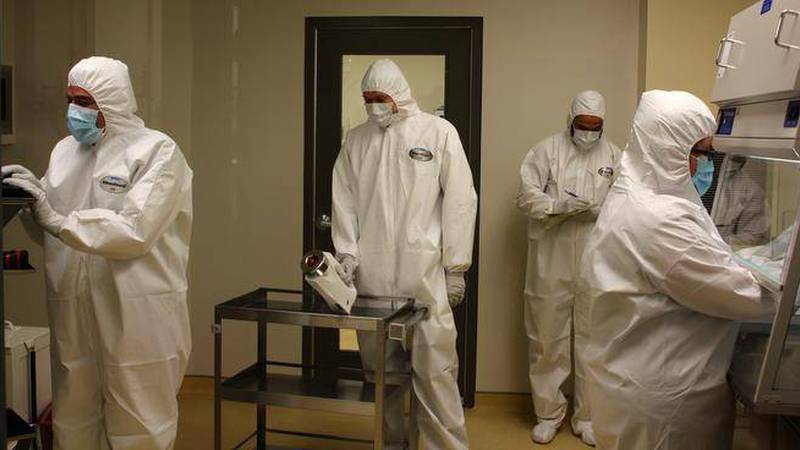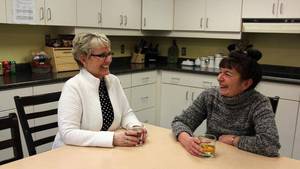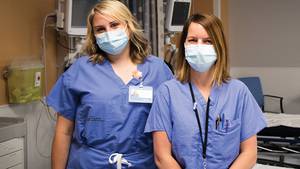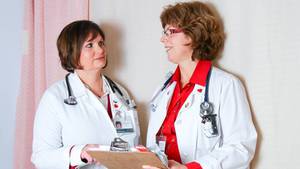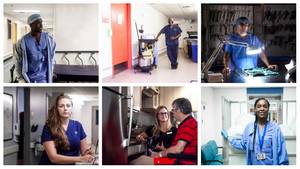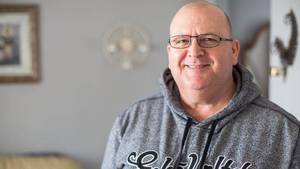It was a process five years in the making. The QEII Health Sciences Centre’s cyclotron was granted a Drug Establishment Licence (DEL) from Health Canada in June 2015, a major step forward — not just for Nova Scotia, but for all Atlantic Canadians.
The cyclotron creates medical isotopes, primarily fluorodeoxyglucose (FDG), in which a minuscule amount of radioactive material is used to power the QEII's positron emission tomography-computed (PET CT) scanner, used to diagnose diseases such as cancer. As the flagship project of a major fundraising campaign, the QEII’s cyclotron and PET CT received funding from QEII radiologists, Bell Aliant, the provincial government and the QEII Foundation.
Before the QEII gained its cyclotron, it had to receive all of its FDG from Montreal. Unfortunately, the isotopes deteriorate with time, so getting the product on a reliable basis became problematic.
“We see more than 2,000 cases a year, and between the half-life, and irregularities with air travel, if a flight is delayed by an hour, as a person that’s fine, but isotopes deteriorate. So if it doesn’t make it on time then you have to cancel a patient that day,” says Dr. Ross. “We were only able to use about one quarter of the isotopes sent from Montreal each day, so there was a lot of waste.”
When the QEII opened its cyclotron in 2010, it adhered to FDG production standards followed across the country and was treated by Health Canada as any new drug. This meant they had to operate under a Clinical Trial Application — the same process a private drug manufacturer would undergo.
“We got the official documentation for the Drug Establishment Licence, which means we have met the Health Canada set of regulations that guide drug manufacturers,” says Dr. Andrew Ross, a nuclear medicine physician at the QEII. “I think it's quite impressive because we are a public facility — not a private company.
We’ve done this with our own, in-house staff that completed the training, and did not hire a great number of outside consultants, and that’s a feather in the cap for this organization.”
For the QEII, receiving the DEL means a number of things. First, there are scientific advancements this licence makes possible for the QEII.
“While all we’re producing currently is FDG, there are other radio pharmaceuticals on the horizon,” says Dr. Ross. “Whether they are currently in clinical trials or outside of the country, we will be able to evolve and incorporate them into our lab, and with the DEL, hopefully minimize the need for clinical trials.”
Dr. Ross also explained there are non-PET medical isotopes, which come from the QEII’s centralized radiopharmacy and are distributed every morning across the province. While those isotopes aren’t held to the same rigour as FDG, he believes having the expertise and the DEL will help improve the facility.
The second wave of impact will be felt by patients who use the PET CT. Operating under a Clinical Trial Application involved a lot of red tape, but with the license, patients can expect shorter wait times.
“A lot of the patients we were treating with FDG were cancer patients, so they were coming in, being diagnosed with cancer and then told they were part of a clinical trial,” says Dr. Ross. “It created a bit of anxiety, as patients hear the word ‘trial’ and think they are being guinea pigs, not realizing they were receiving the highest level of clinical care.”
If the QEII wanted to distribute their FDG in the past, they could have, but any facility that received it would have been considered a satellite of the clinical trial. This meant all paperwork and issues the QEII faced would also lie in store for those facilities too. The added hoops were daunting, but with the DEL the door is open for smoother distribution across Atlantic Canada.
Having the cyclotron on-site means more of FDG produced on-site is actually used. The DEL saves facilities in New Brunswick (which has clinical scanners only) and Newfoundland (which has a scanner, but is at least 18-24 months away from its own cyclotron) from having to continue to rely on getting their FDG from long distances.
The DEL isn’t the end of the line for the QEII — it’s more like a new beginning.
“This isn’t a means to an end. The DEL is ongoing. Health Canada will be back every year to perform an audit, making sure we are doing everything we’ve said we would, and that our standards are kept high,” says Dr. Ross. “But having our in-house staff trained to the level they are just adds to that maintenance, upkeep and innovative standards we strive to have.”

